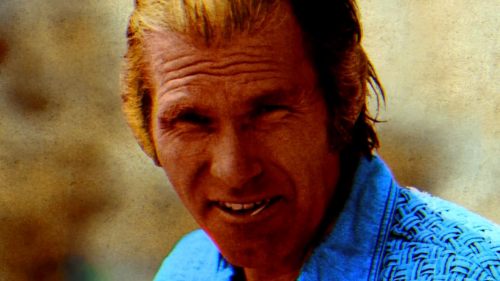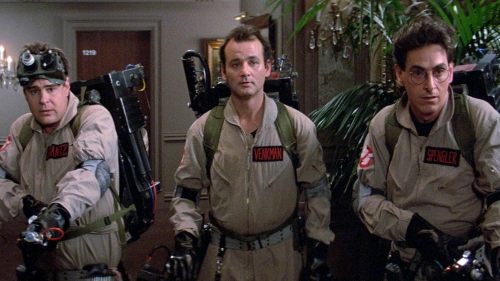Collins’ Crypt: For A While, The AMITYVILLE Franchise Was Working!
Since I wasn't alive at the time, it's truly difficult for me to wrap my head around the fact that The Amityville Horror is the 2nd highest-grossing film of 1979. I've written before about my affinity for this landmark year in the genre, and just about any movie buff could rattle off a half dozen iconic films from it, with Alien, Star Trek: The Motion Picture, Rocky II, and Apocalypse Now being just a few examples, but a bunch of flies and a demonic voice yelling "GET OUT!" was more appealing to audiences than any of that, to the tune of $86m - which translates to $313m in today's dollars. There are only a handful of horror films to have ever sold more tickets, and (until Disney unleashes a few more behemoths) it's one of the 200 highest-grossing films of all time in the US when adjusted for inflation.
Normally, this would mean a pretty standard and profitable series of like-minded sequels, but for a variety of reasons (some legally-charged, due to the story's true-life roots - the Lutz family featured in the first film didn't want their name attached to any further entries) the Amityville franchise never managed to capitalize on the original's success. While other haunted house franchises have managed to have lightning strike twice and keep adding to the studio's coffers (The Conjuring, for example, which even had a brief connection as the Warrens investigated the house after the Lutz family claimed it was haunted), Amityville has run the gamut from theatrical sequels to television movies to (mostly) direct to video installments, but no individual film has managed to even come close to making the same kind of impression - the notoriety of the name keeps the movies coming, but few but the most dedicated genre fans tend to notice.
A casual movie fan might think that the 2005 remake was the last one, but believe it or not, there have been over a dozen (!) Amityville-branded movies since then, the most high profile of which was Amityville: The Awakening, thanks to the Blumhouse name, a few good stars (Jennifer Jason Leigh, Bella Thorne) and - perhaps most importantly - its notorious habit of being rescheduled every time a new release date came within reach. The film was shot in 2014 and due for release in early 2015, but it kept getting bumped (and reshot/re-edited along the way), becoming a bit of a laughingstock at the horror sites as new release dates functioned as its promotion. By the time it finally got released in October 2017 (temporarily for free on Google, ouch), whatever initial buzz it had going for it had long worn off, though some who have seen it have said it's actually not that bad, all things considered.

And it's considered a true sequel by the IMDb and Wiki pages, so it's got some credibility that the likes of Amityville Asylum and Amityville Death House do not. Per the IMDb's "connections" page, the legit franchise is made up of the 1979 original and its two theatrical sequels, the rarely seen Amityville Curse*, the remake, Awakening, and the quartet of "cursed object" entries that were recently released by the good folks at Vinegar Syndrome (collectively titled as, appropriately, "The Cursed Collection"). The first of the lot was 1989's Amityville: The Evil Escapes, which was an NBC movie of the week (!) starring Patty Duke that wasn't based on anything that really happened (or was claimed to have really happened), but had its roots in one of the original story's most famous, yet somewhat apocryphal facts, that the Lutz family left all their belongings when they ran out of the house in the middle of the night after only 28 days there. They did do that, yes, but it's not like they had to live the rest of their lives, or even a full 24 hours without any belongings - someone was sent to collect their things and send them to them the very next day, and those movers didn't have any ghost problems.
But producers wanted to skip that part and focus on the "they left everything behind" part of the story. From this first part of the full story, the idea was that their stuff got sold at a yard sale or auction (it varies) and brought the haunted shenanigans to the homes of those objects' buyers. This is, in my opinion, a pretty genius idea - it not only allows them to finally move the action away from 112 Ocean Avenue (not to mention the Lutz and DeFeo families), but gives them a legitimate excuse for the disconnected, almost completely random existence of the franchise as a whole. All a screenwriter has to do is add a quick line at the beginning of every script ("Your grandmother got this ______ at a yard sale and sent it to us as a housewarming gift!") and maybe toss in one quick shot of those damn windows, and they're free to do whatever they want for the rest without relying on any kind of continuity or established timeline (which was already bungled by the 2nd entry, as series' fans can attest).
However, Evil Escapes was a TV movie, so it was naturally limited by the constraints of what could be allowed on network TV in 1989. Also, the haunted belonging in question for that one was a lamp, which is, well, stupid. The next three installments that ran with this idea not only had slightly more foreboding objects (a clock, a mirror, and a dollhouse, respectively) but also were R-rated direct to video movies (some even got theatrical releases in foreign markets), freeing their makers to let their imaginations run a little more rampant as they were only confined by their budgets. The best of the lot was Amityville 1992: It's About Time, which was directed by Hellraiser II vet Tony Randel and sported some terrific FX work from KNB. There's a low-key kitchen sink vibe to the manifestations the haunted clock brings to their California home; in its 90 minutes we get Nazis, torture tables, evil dogs, a dude swallowed up by goo, hints of brother-sister incest (a nod to Amityville II, one can assume), and even time travel! Ambition was not exactly in plentiful supply when it came to '90s DTV horror, so while it certainly has some flaws there's enough genuine effort and nutty ideas on display to make it one of the era's better DTV flicks as a whole, and certainly among the highlights of the franchise.

The next film, subtitled A New Generation, broke the mold even more by moving away from suburban homes/traditional family units and focusing on a "family" of adults who populate an artist's loft in the city. And the haunted object this time is a mirror, which has been a go-to object for several horror movies before (The Boogey Man, an installment in 1974's From Beyond the Grave, etc) and since (most notably Oculus), so it's easier to buy than a damn lamp. It's also got the best cast any of the '90s entries could offer: Richard Roundtree, Lin Shaye, Robert Rusler David Naughton, and Terry O'Quinn all appear, lending it pretty of genre cred, and if you noticed that it happens to look better than the average DTV horror flick, you have a young Wally Pfister to thank, as this was one of several low budget films (many of which, including this one, could be dubbed "Skinemax" selections) he shot before Christopher Nolan rescued him with the Memento gig.
1996's Amityville: Dollhouse returned to the traditional "family in a nice house" setup, albeit a blended family of a man and his teenage son and young daughter and a woman with a younger son of her own, allowing for some of the same "you're not my real father!" tension of the original film. It also dips its toes into incest again, as the mom keeps lusting after her stepson, who doesn't notice because he's got a girlfriend (the late Lisa Robin Kelly, best known as Eric's sister Laurie on That '70s Show) who shows up every time the parents leave. In fact, one common theme with these movies is that the evil force/ghosts/whatever (there's no consistency - shocking, I know) tends to manifest itself differently to each person, and they never seem to notice anyone else is going through anything, either. But here, there's a pair of proactive supporting characters who do the legwork in tracking down how/why the house is being targeted (this time it's voodoo driven!), allowing the family to run through their personal demons (including a zombie-like resurrection of the mother's first husband) while these other characters provide the exposition.
Classics they are not, but they are entertaining in their own quirky ways, and are miles better than pretty much anything that's followed from the likes of the Asylum. I don't know why they didn't just stick with this general "stuff from the house" idea for all of the other DTV sequels (nearly all of which were made independently of one another and share no relation), but I assume that because the idea originated with author John G. Jones in his book Amityville: The Evil Escapes (aka Amityville: Untold Stories) they would have to pay him to carry on with the concept. But as a four-film miniseries within the series it offers the last time there was some semblance of quality control on these things before they were being churned out by pretty much anyone who wanted to use the word "Amityville" in their title. Vinegar Syndrome's exclusive boxed set is the first time they've been released on Blu-ray, and the transfers are pretty great (Dollhouse in particular), plus there's a few interviews on each one that get a bit into the general backstory behind their productions, making it a solid collection for fans and a fine way to discover the series maybe not at its peak, but certainly at its most consistent.
*An ironic inclusion in the "official" group, as it has zero connection to the others beyond a few vague references, and the house doesn't even have the iconic "eye" windows right! It stars Kim Coates though, making it worth a watch by default.



